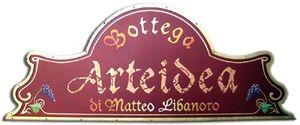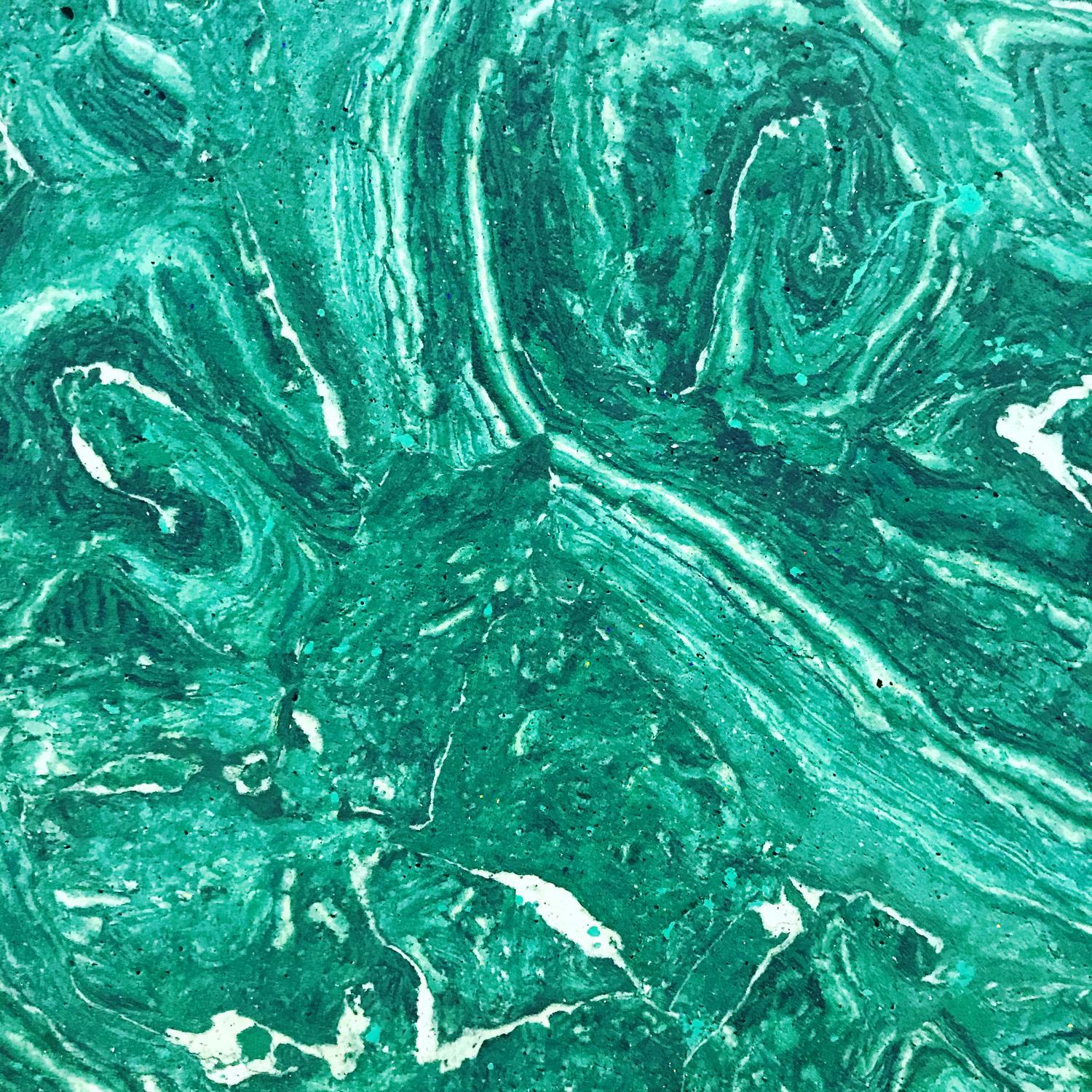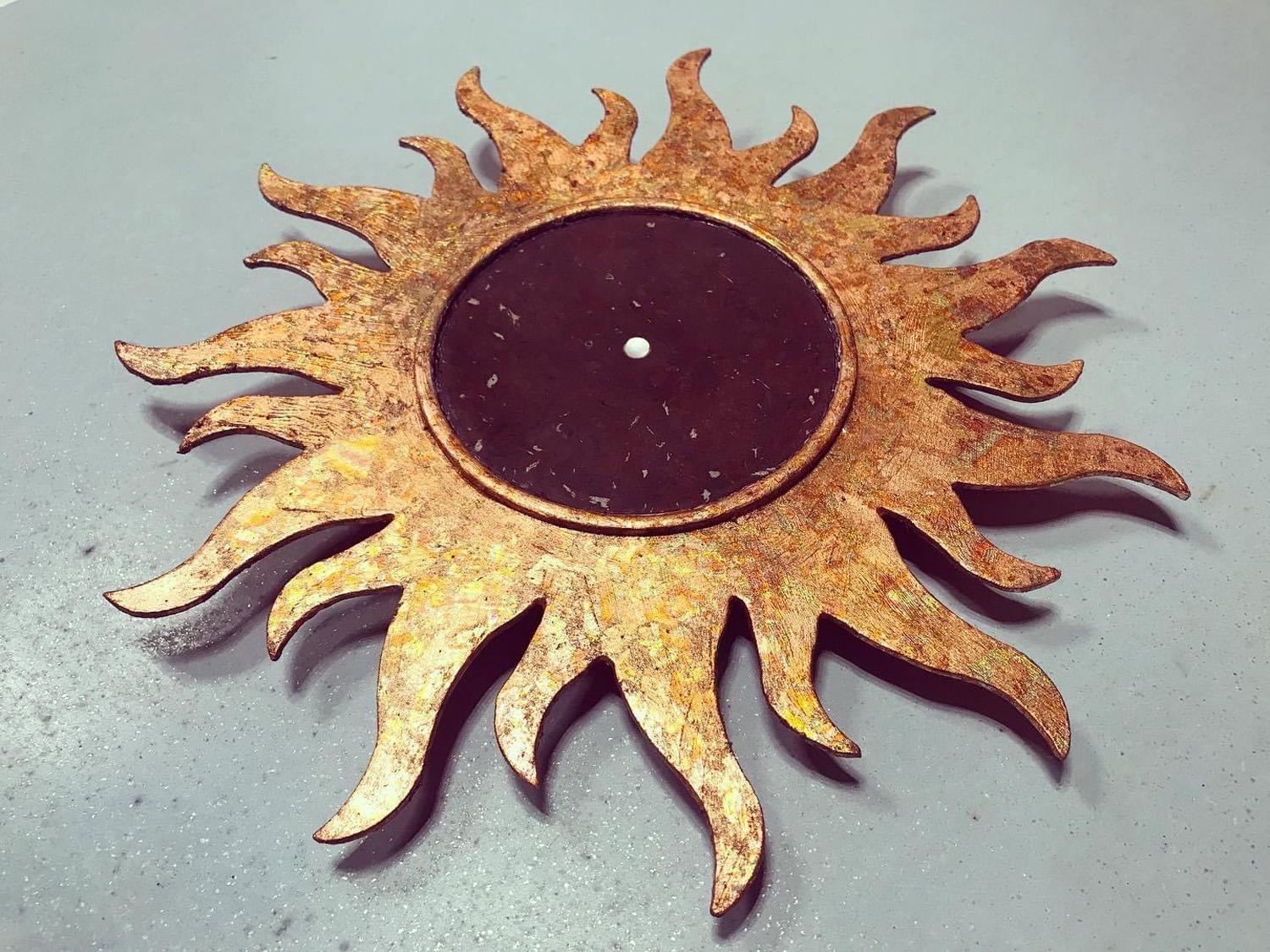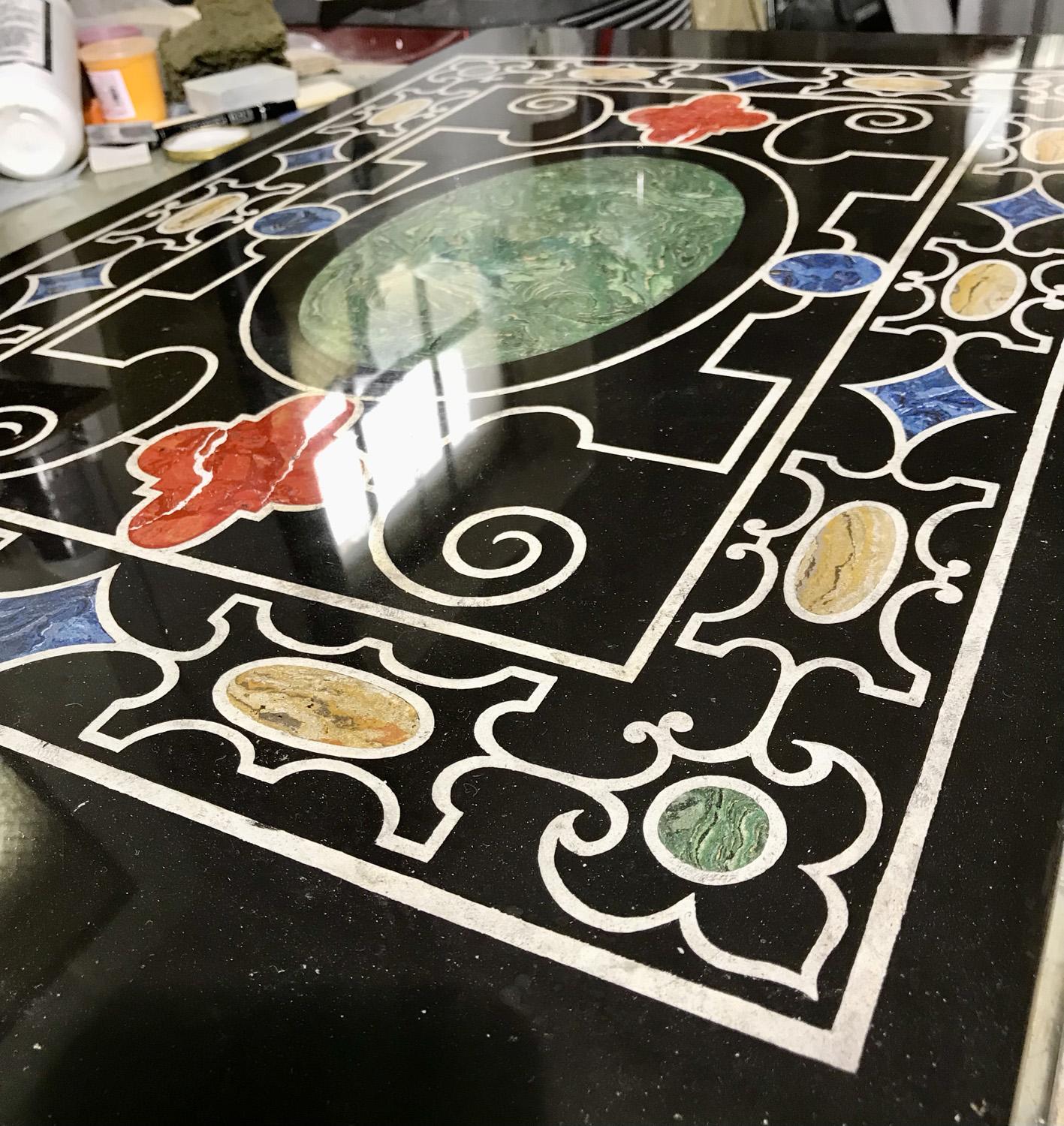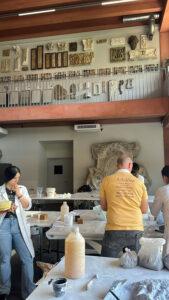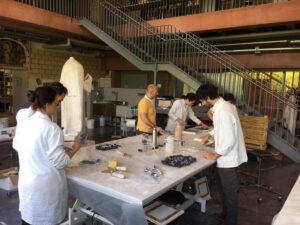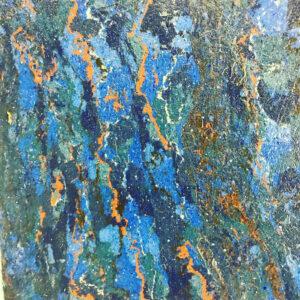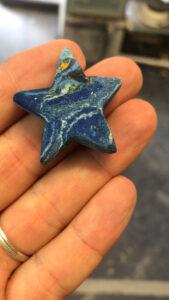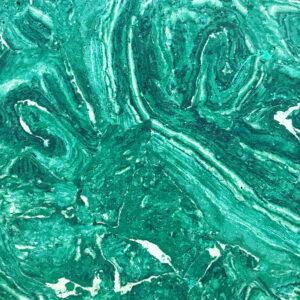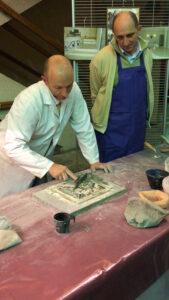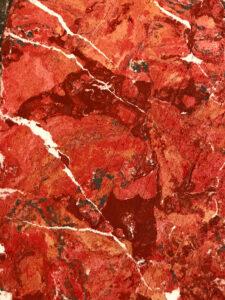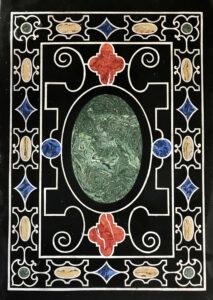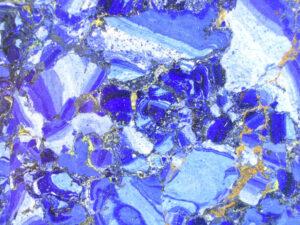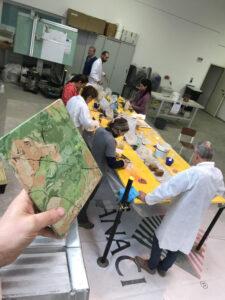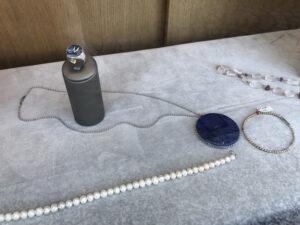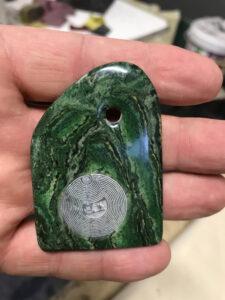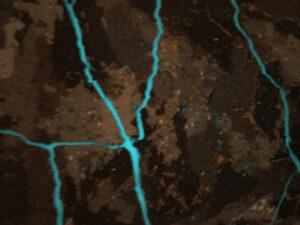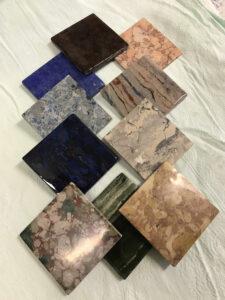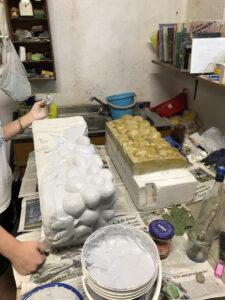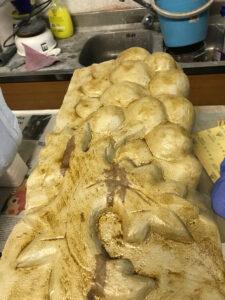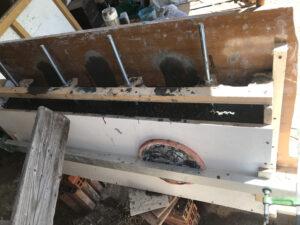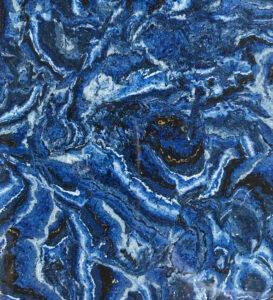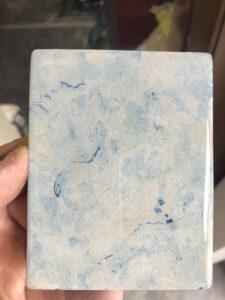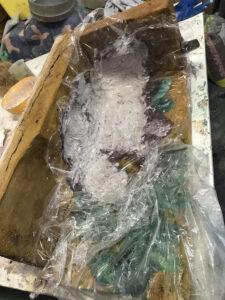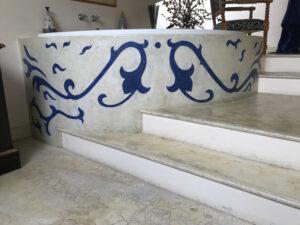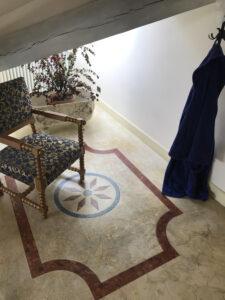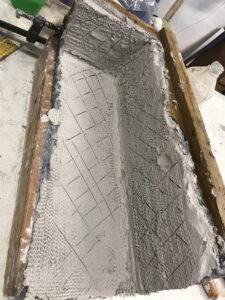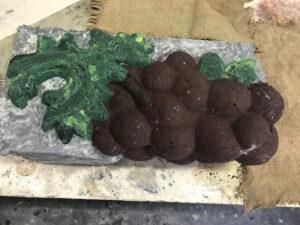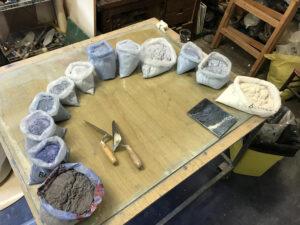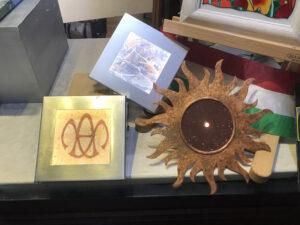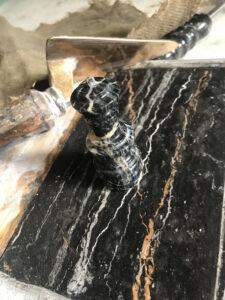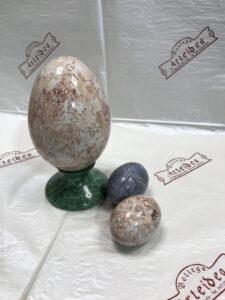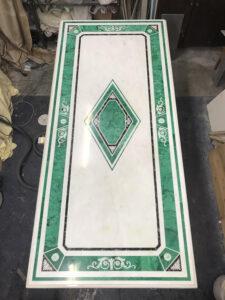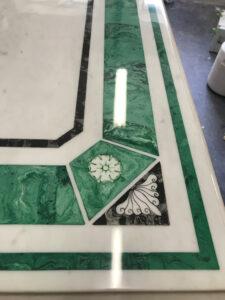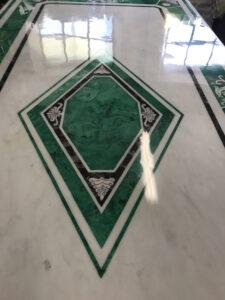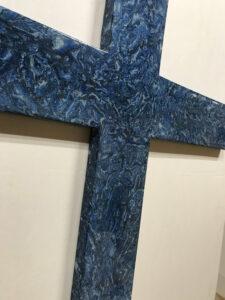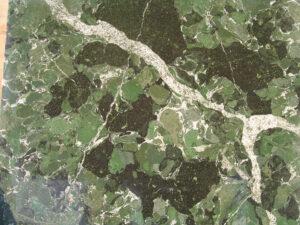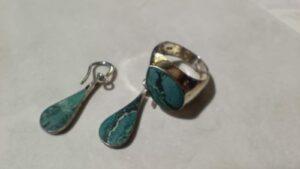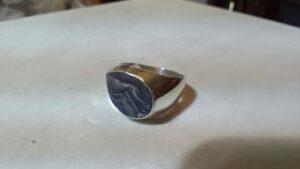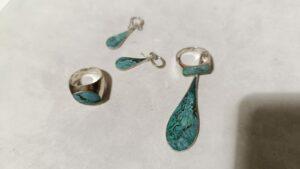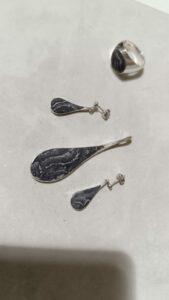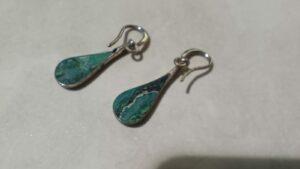ART MARBLE IN SCAGLIOLA
For over 18 years, Matteo Libanoro has made his passion for the art or artificial marble technique the centre of a vast production dedicated to handcrafted coverings, accessories and jewels.
Inside his workshop, Bottega Arteidea in Gattinara, the artist creates unique works by hand, faithfully reproducing the veins of the marbles with customised colours according to the client’s taste, helping him to elegantly enhance any room in his home.
Historical background and the origins of artificial marble
What is artificial marble in detail, the core of Matteo Libanoro’s works?
The name comes from the word ‘artifizio’, that is, hand-made, and given the great artistic mastery that is used in creating it, it is also called art marble.
This process was used to replace real marble where there was no possibility of using the primary natural material, due to the geographical area or only for transport reasons, thanks to its great possibility of application in covering curved shapes or various profiles, ornamental, to its lightness and its extreme artistic beauty.
The technique for the composition of the dough was a knowledge handed down from father to son and kept secret.
Read More
This ancient technique was used as early as the end of the 18th century by skilled craftsmen from Rima, a small village of Walser origin in Val Sermenza, who exported it with great skill all over the world, decorating various prestigious buildings. Various families are worth mentioning: Guilietti, de Paulis, Viotti, Giavina, Bastucchi, Rappa, Detoma, Axerio and lastly the Dellavedova, all of whom were great decorators, sculptors, plasterers, stonemasons, artists and great entrepreneurs.
The most successful companies of the 19th century were those of Antonio De Toma Senior and later his son Antonio Jr., who operated in Sweden, Norway, Hungary, Prussia and Austria. In the 19th century in Vienna, Emperor Franz Joseph entrusted him with many works in various prestigious palaces, imperial residences of Jewish bankers and numerous commissions for barons, kings and queens.
Antonio was made a Knight of the Order of Franz Joseph and decorated with the Gold Cross of Merit by the Austrian Crown. In Rome, Pope Leo XIII named him Knight of the Order of St. Gregory and Vittorio Emanuele, King of Italy, raised him to the rank of Commendatore.
Antonio Jr. died in Varallo in 1895 and was succeeded by the firms of the Axerio Piazza family (who worked first in Berlin and then in Moscow and St. Petersburg) and the Axerio Cilies family (Romania, Sweden and Russia): these firms were born from the Detoma company and later became autonomous, working until 1917, when they had to abandon the shipyards to save themselves with the revolution.
Pietro Axerio-Cilies, under the guidance of Antonio Detoma, while working in the castle of the Rothschild bankers, met the future king of Romania (Carol) who was impressed by the beautiful work and suggested he move to Romania to apply the technique in palaces and buildings in the capital.
His firm began to build entire palaces and not only for the exceptional artificial marble finishes: by the early 1900s his company had more than 3000 employees.
Among the most impressive works of the Axerio-Cilies family were the University in Romania, the church of Doamma Balasà works in the royal palace in Bucharest and the palace of Sinaia, worked in the grand Rothschild castle, highly esteemed by the Romanian royal family they decorated various public and private buildings, in Vienna and for the Austro-Hungarian Empire.
The fate of running their father’s company fell to the two brothers Giulio and Antonio Axerio-Piazza until they reached an entrepreneurial dimension on a European level: their company in Berlin established itself in Germany and offered a wide range of artistic work and decoration.
Giulio and Antonio, with the help of Antonio Ragozzi, created a small authentic epic with their entrepreneurial activity towards Tsarist Russia and worked in St. Petersburg in the hermitage, where they decorated the interiors of salons. It all ended during the Russian Revolution and to save themselves they abandoned all their jobs and most of their possessions.
The Dellavedova company succeeded them in the early 1900s, Giovanni with his father Cristoforo and later with his son Silvio born in Hamburg in 1931.
They worked all over Europe, in Africa and Norway until 1933 when they too fled Germany with Hitler’s rise to power and moved to Turin where they began to spread the prestigious technique, working in churches in Moncaglieri, Bistagno, Nizza Monferrato, Grignasco, Novara and others.
They received great recognition from the great architect Portalupi, who commissioned them to cover the columns of the Napoleonic rooms of the Brera Art Gallery in Milan, and in Asti, they created the columns, pilasters and balustrades of the Basilica “Madonna del Portone”.
The Dellavedova family, used to moving around a lot like the families of previous eras, had building sites on various continents.
Giovanni in 1949 left his son Silvio the task of finishing the site in Asti and began work in Casablanca in Morocco: a cladding of staircases and columns of a bank building, then in Algiers for wall coverings at the City Hall, in Marrakech they created a hall in Lapis lazuli, in Menes the post office building and hall of the city hall with 32 red columns: “They seem to catch fire in the setting sun” Silvio Dellavedova remembers with emotion.
Giovanni died in 1963 and with the arrival of modern chemical techniques, the majestic beauty of art marble was set aside by architects and clients. Silvio, unable to adapt to works of very low artistic quality, decided to go and work for Fiat.
In 1986, now retired, Silvio returned to Rima in Val Sermenza, almost with moral duty, and began to pass on the knowledge of technique: for two years he went to teach at an art school in Varallo Sesia and then devoted himself to giving courses in the municipality where he lived.
Master Silvio Dellavedova taught his secrets of art marble from 1998 onwards to various pupils, one of whom was me, Matteo Libanoro: I began to follow all his courses for four years, tried to help him in all his restoration work on sites created in previous years, and began to help him in subsequent courses, teaching in my turn until he gave his total approval and wrote me a splendid letter describing my work with esteem and admiration.
I have been working with the technique of art marble since 1999; in the past, I have often had the pleasure of being helped by Silvio, I have exhibited at various art and restoration fairs where he was very pleased to visit me.
With great esteem I can say that I had a great Master of Art, a man with a big heart, for me he was like a ‘third grandfather’, with his whole family, Anita his wife and children.
I have taught at various art and restoration institutes: in Turin at the M. Rossi School of Artisan Restorers, I held a course at the restoration laboratories of Venaria Reale and the Vatican Museums’ laboratories.
Materials, techniques and equipment
Artificial or artistic marble is composed of scagliola, which is powdered pigments and animal glue diluted in water.
Canary seed originates from gypsum chemically called calcium sulphate and is one of the softest and most widespread minerals on earth. This mineral is also called selenite or moonstone and comes in the form of crystals of different shapes, prismatic, tabular, germinating or burnished lamellar.
Read More
Used in construction, medicine, the steel industry, agriculture, by sculptors, decorators and in our case transformed into scagliola.
The mineral extracted from the quarries is processed by firing, also known as calcination, and heated to 128 C°, where the gypsum loses a molecule of water to become semi-hydrated calcium sulphate and is transformed into the so-called scagliola or gripping gypsum, in the form of powder, and then again in contact with water it rehydrates and after a few minutes it sets and solidifies.
The quality of the final product depends on the purity of the natural mineral and the correct industrial processing. Throughout history, scagliola was often used by scagliolist craftsmen to create decorations in the artistic field due to its qualities.
To create malgames with scagliola, in addition to water a part of the glue of animal origin is added, in different percentages depending on the type of processing. The colouring of the scagliola is done by adding coloured pigments of different origins and in different quantities depending on the tone to be obtained. The origins of the pigments are different: natural piles of earth, natural pigments of metallic origin and synthetic organic pigments called anilines.
To create the various colours, which will give rise to the art marble, the pigments are mixed with dry scagliola (without water) in different quantities and, depending on the veining to be created, various bags are made; some techniques require the preparation of 50 or more tones, the greater the quantity the more beautiful the final work will be.
Each technique, therefore, requires a great deal of colour preparation and real recipes composed of the percentages of colours mixed to obtain the right combination that will imitate the veining of existing marble.
The techniques can be divided into two groups of creation, “wet” and “dry”.
The first consists of mixing the scagliola, previously coloured in different bags, on a table using trowels, spatulas, blades, with water and natural glue in different doses according to the work to be created: the result is a more or less wet mixture that is then joined together to form the veins.
The “dry” method is the combination of the various colour tones through dry processing, using trowels, and sieves, creating the various veins and colour combinations with the powders only and then wetting them all together.
The mixtures obtained through various processes have various consistencies depending on the technique used and, depending on the amount of water and glue used, can be applied as a coating for walls, floors, columns, arches, all the various architectural elements and for furnishing objects such as tables, consoles, furniture tops, vases of all kinds.
This is an ancient technique that could replace the real stone in several cases, thanks to its lightness, its malleability in processing, and its great value for being customised in terms of colour, shape and the creation of unique veining.
In the creation of mixtures such as green malachite, blue lapis lazuli, sodalite, antique black, porphyry red and others, it is also much cheaper than natural stone.
Then, there is the aspect of respect for nature: the use of this technique would reduce the continuous extraction of marbles and stones that disfigure entire mountains or geographical areas.
- TUTTO
- ELEMENTI D'ARREDO
- GIOIELLI
- RIVESTIMENTI PARETI
- LAVORAZIONI
- CORSI
